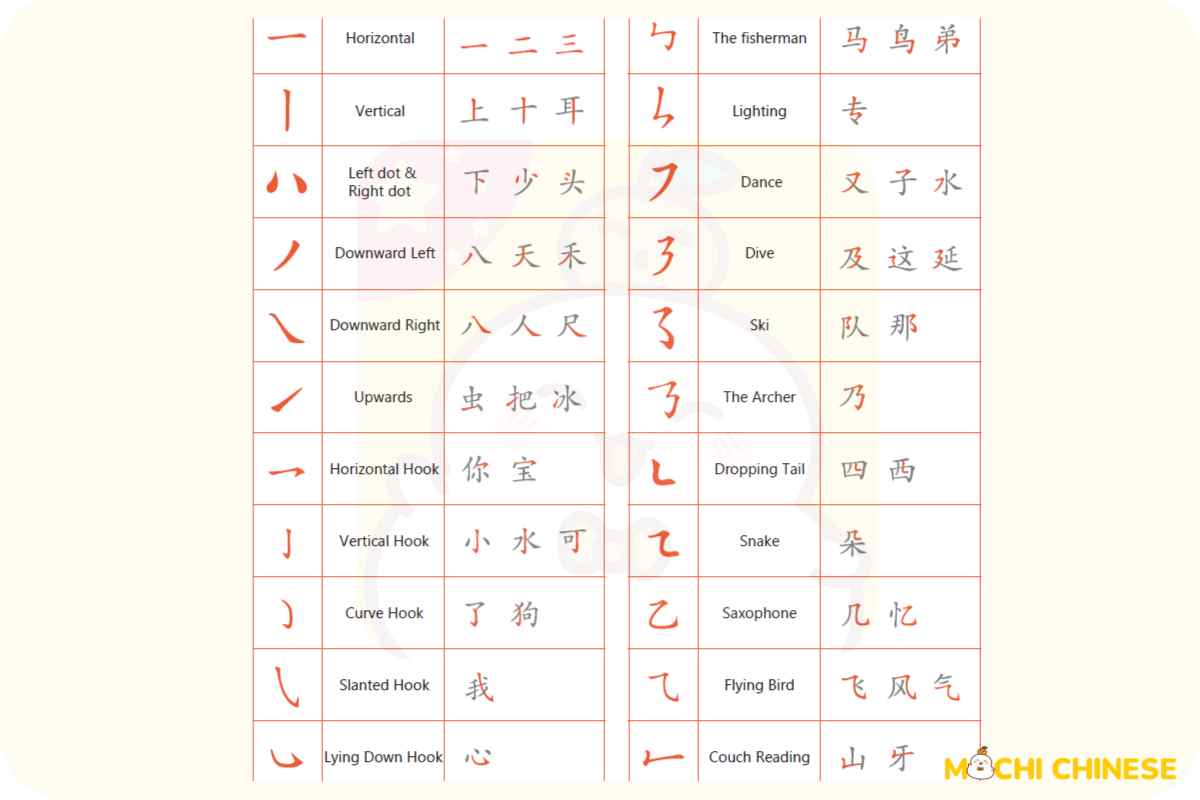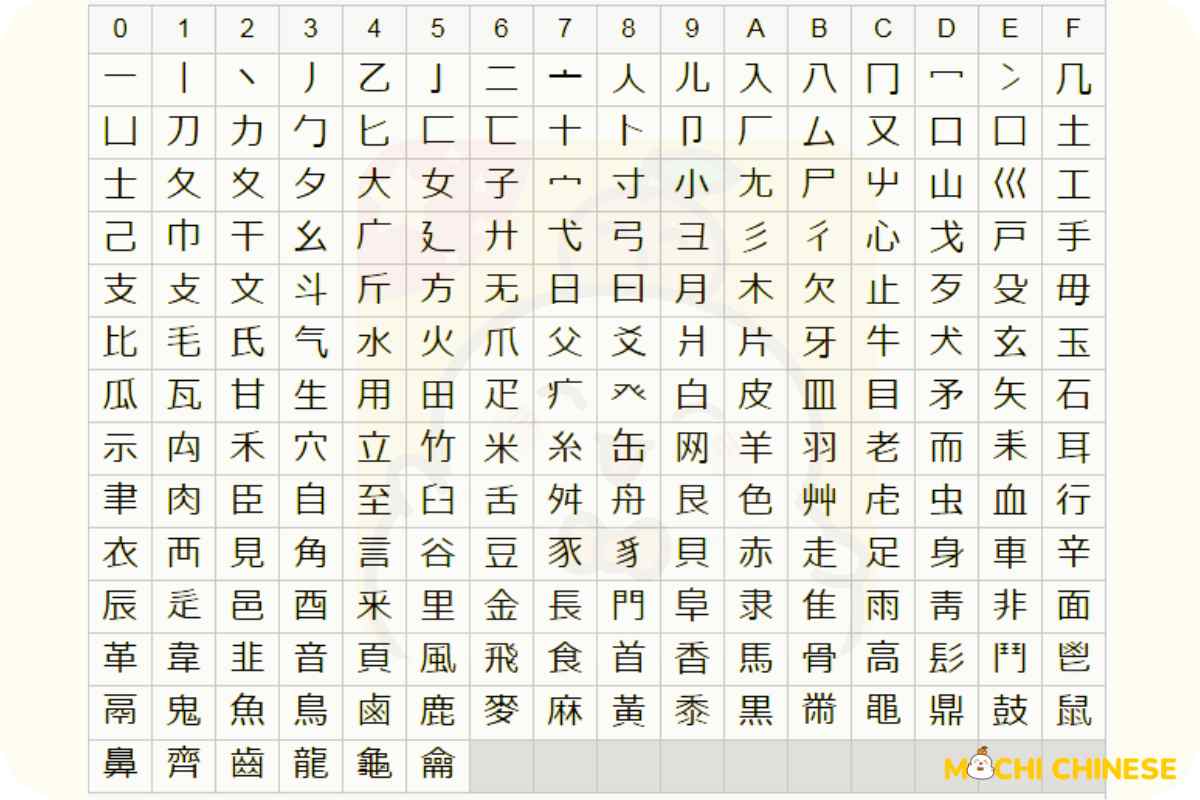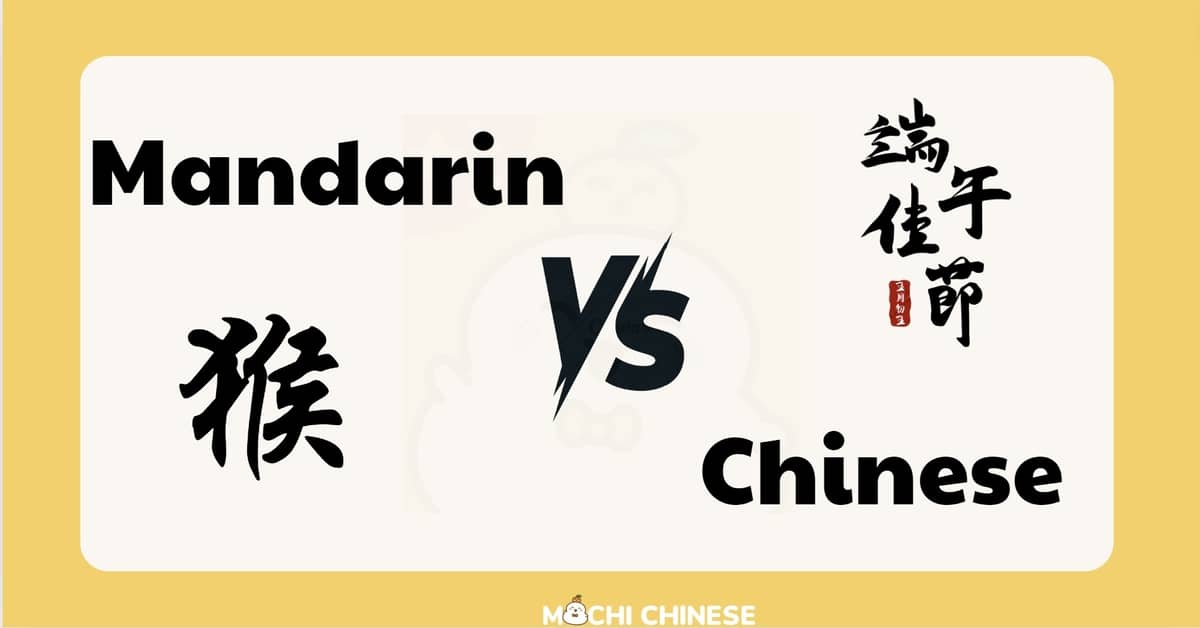Chinese characters are based on radicals, each with its own meaning. These radicals are combined into characters and words. To learn Chinese writing, one must first master strokes, which are a set of line patterns arranged to form characters. Mastering these strokes and understanding the logic behind radicals makes learning Chinese writing easier.
Step 1: Understanding the Basics of Chinese Characters
Chinese characters are more than just symbols; they are a beautiful amalgamation of art and meaning, where form and function are deeply interconnected.
The Building Blocks: Strokes and Radicals
Each Chinese character consists of several strokes, which are the basic units of Chinese writing. Think of these strokes as the alphabet of the Chinese language. There are several types of strokes, including horizontal (一), vertical (丨), and various hooks and curves. Learning these strokes is like learning the foundation of building blocks.

Radicals are components of Chinese characters that often hint at the meaning or sometimes the pronunciation. For example, the radical ‘心’, meaning heart, is found in emotions or feeling-related characters like ‘想’ (think), ‘忘’ (forget), and ‘怒’ (angry).

The Crucial Role of Stroke Order
Following the correct stroke order is crucial as it facilitates easier learning and memorization, helps maintain the balance and integrity of the more complex characters, and speeds up writing. Characters should be written from top to bottom, and left to right. This not only makes writing smoother but also ensures that the characters look balanced and aesthetically pleasing when completed.

Step 2: Start with the Most Common Characters
Familiarizing yourself with the most commonly used characters first can significantly boost your reading and writing speed.
Focus on High-Frequency Characters
Starting with high-usage characters such as ‘是’ (shì, is), ‘有’ (yǒu, have), and ‘我’ (wǒ, I/me) can help beginners quickly start forming basic sentences. These characters appear frequently across various contexts, providing new learners with the immediate utility of their knowledge.
Learning in Context
Always learn characters within the context of phrases or sentences. This approach not only makes the learning process more interesting but also enhances understanding. For instance, learning the character ‘开’ (open) within the phrase ‘开门’ (kāi mén, open the door) helps solidify its meaning and use.
Step 3: Practice Daily with a Focus on Quality
Consistent practice is essential for mastery, especially with something as intricate as Chinese characters.
Establishing a Routine
Consistency is key. Dedicate specific times of the day for practice and stick to them. Over time, this regular practice becomes a habit, integrating Chinese writing into your daily routine seamlessly.
Techniques for Effective Practice
Focus on the quality of each character you write. It’s better to write one character perfectly ten times than to hurriedly write it fifty times with poor form. Tools like practice grids are very helpful in maintaining proportions and alignment.
Step 4: Use Technology to Enhance Learning
Leveraging technology can provide interactive and effective learning experiences.
Digital Practice Tools
Digital tools that simulate the writing experience can be highly effective. These tools often provide instant feedback on stroke order and character accuracy, features that are incredibly beneficial for self-directed learners.
Incorporating Audio-Visual Aids
Multimedia resources that combine text, sound, and visual animations can greatly enhance the learning experience. Hearing the pronunciation while seeing the character helps in reinforcing memory through multiple sensory engagements.
Step 5: Engage with Chinese Culture
Understanding the cultural context behind the characters can enrich the learning experience and provide deeper insights into the language.
Cultural Immersion through Media
Engage with media such as Chinese films, music, or literature. This exposure not only improves language skills but also helps you appreciate the nuances of character usage in different contexts.
Real-World Application
Applying what you’ve learned in real-world situations is perhaps the most effective way to solidify knowledge. Try labeling items around your home with their Chinese characters or write short notes or messages in Chinese.
Conclusion
Mastering Chinese characters is a journey that can open up new perspectives and connections with one of the world’s oldest cultures. With patience, practice, and the right resources, anyone can learn to write Chinese characters beautifully and effectively. Embrace each step of this journey with curiosity and enthusiasm, and watch as the world of the Chinese language unfolds before you.
Recommendation: Mochi Chinese App – Memorize 1000 words in 30 days
Mochi Chinese offers a range of features designed to enhance your learning experience, including interactive lessons, quizzes, spaced repetition and Golden Time techniques.
- Focus on Joyful Learning:
Mochi Chinese aims to make learning Chinese fun and engaging. - Bright Design & Adorable Mascots: The app uses cheerful colors and cute characters to keep you motivated.
- Spaced Repetition System: Smart algorithms help you review words at the perfect time to boost memorization.
Download the Mochi Chinese app on Google Play Store, App Store, or Web version!





